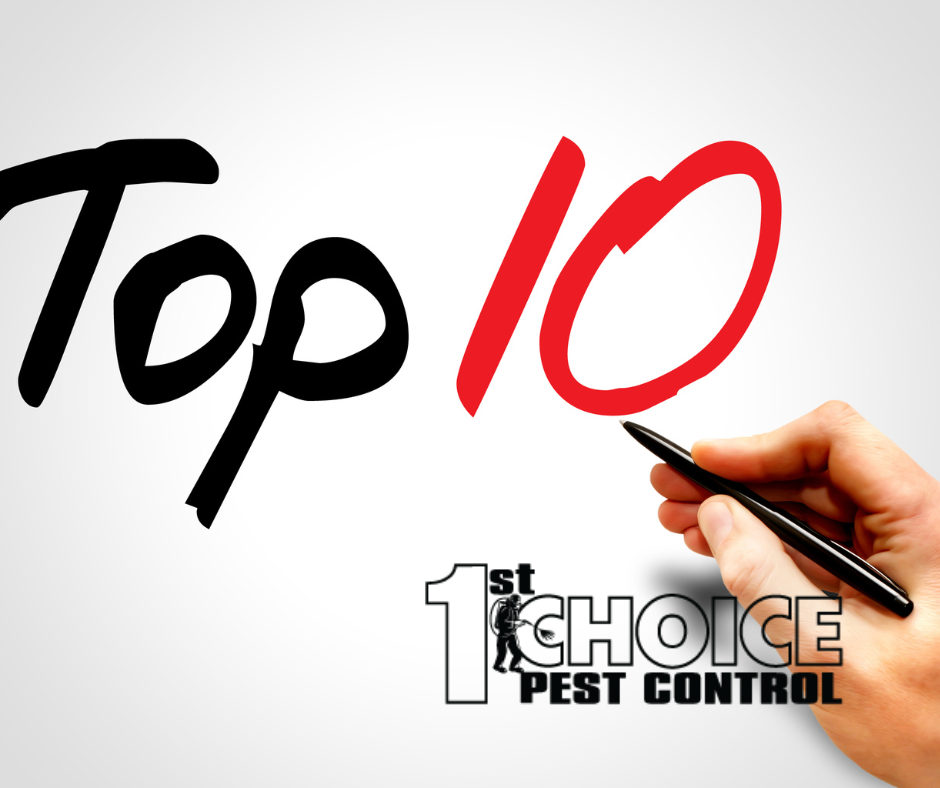Identifying and Preventing the Top 10 Most Common Household Pests
Understanding the presence and behavior of common household pests is crucial for every homeowner. Unwanted invaders like ants, cockroaches, spiders, rodents, and termites can cause significant damage to our living spaces, impacting our health and peace of mind. By learning to identify early signs of infestations and implementing preventive measures, we can protect our homes from potential hazards.
This blog aims to shed light on the top 10 most common household pests and equip readers with essential knowledge to deal with them effectively. From the pesky ants that invade our kitchens to the stealthy rodents seeking shelter in our walls, each pest demands unique attention and understanding. By delving into their habits and habitats, we empower homeowners to recognize signs of infestations before they escalate. By implementing practical prevention strategies, we can create an inhospitable environment for these pests, keeping our homes safe and secure for our families.
Remember, early detection and proactive pest control play a crucial role in maintaining a pest-free home, and this blog will serve as a comprehensive guide to help readers achieve just that.
Understanding the Most Common Pests
1. Ants:
Ants may seem small and harmless, but their collective strength can wreak havoc in our homes. Identifying these tiny invaders is vital as they have a knack for discovering any food source, leaving trails for others to follow. Commonly found in kitchens and pantries, ants leave behind pheromones that act as a road map for future foragers. By recognizing these trails and sealing entry points, homeowners can deter ant infestations and maintain a clean, ant-free space.
2. Cockroaches:
Cockroaches, infamous for their resilience, can trigger disgust and fear in most people. These nocturnal pests prefer dark and damp environments, making kitchens, bathrooms, and basements their preferred hideouts. Understanding their various species and identifying signs of their presence, such as shed skins and egg cases, is crucial for early intervention. Prompt action in eliminating food sources and keeping the environment dry can significantly reduce cockroach populations.
3. Spiders:
While most spiders are harmless and even beneficial in controlling other pests, venomous species can pose health risks. Identifying venomous spiders like the black widow or brown recluse is essential for safety. Creating a less spider-friendly environment through regular cleaning and sealing cracks and crevices helps maintain a balance between a pest-free home and preserving these arachnids’ ecological role.
4. Rodents (Mice and Rats):
Rodents are highly adaptable creatures capable of causing extensive damage to property and transmitting diseases. By identifying common signs of rodent activity, such as droppings, gnaw marks, and nests, homeowners can act swiftly to prevent full-blown infestations. Properly securing food storage, sealing potential entry points, and employing traps or baits are effective measures to keep rodents at bay.
5. Termites:
Termites silently pose one of the most significant threats to homeowners, as they primarily target wooden structures. Detecting termite activity early on can prevent devastating damage. Keeping an eye out for mud tubes, discarded wings, and hollow-sounding wood can help identify an infestation. Regular inspections by professionals and using termite-resistant building materials are crucial for protecting homes from these silent destroyers.
In the next section, we will delve into effective prevention strategies to safeguard our homes from these pesky intruders and maintain a pest-free living environment. Proactive measures and understanding the unique habits of each pest will empower homeowners to take charge of their spaces and protect their families’ well-being. Let’s explore how to tackle these challenges head-on and create a safe haven that is inhospitable to common household pests.
Prevention Strategies
1. Bed Bugs:
Bed bugs are notorious hitchhikers that often find their way into homes through luggage, used furniture, or clothing. Early detection is vital, as these blood-feeding pests can cause itchy bites and sleepless nights. Regularly inspecting bedding, furniture, and cracks in walls can help identify these tiny pests. If an infestation is suspected, seeking professional treatment is crucial to eradicate them effectively and prevent their return.
2. Fleas and Ticks:
Fleas and ticks are common pests that often hitch a ride on our pets and find their way into our homes. These bloodsuckers can transmit diseases to both humans and animals. Regularly grooming and treating pets with flea and tick preventatives is essential in reducing infestations. Additionally, maintaining a well-manicured yard and keeping grass trimmed can discourage these pests from proliferating outdoors and subsequently infesting indoor spaces.
3. Mosquitoes:
Mosquitoes are not only annoying but can also transmit dangerous diseases like West Nile virus and Zika virus. Stagnant water serves as their breeding ground, so eliminating standing water in and around the home is vital. Installing screens on doors and windows and using mosquito repellents can significantly reduce mosquito bites, ensuring a more comfortable and safer living environment.
4. Silverfish:
Silverfish are wingless insects that thrive in humid environments, such as bathrooms and basements. Identifying these pests and reducing humidity levels through proper ventilation and dehumidifiers can discourage their presence. Storing paper, books, and fabrics in sealed containers can protect them from silverfish damage.
5. Fruit Flies and Gnats:
Fruit flies and gnats are a nuisance, especially in warmer months when they are attracted to overripe fruits and damp organic matter. Regularly disposing of rotting fruits and vegetables, keeping trash bins covered, and cleaning drains can significantly reduce their populations. Implementing traps and barriers can also help keep these flying pests at bay.
Conclusion:
Armed with knowledge about the top 10 most common household pests and their behaviors, homeowners can take proactive steps to identify and prevent infestations. Early detection and swift action are crucial in maintaining a pest-free home environment, protecting property, and safeguarding family health.
By implementing the prevention strategies outlined in this blog, homeowners can create an inhospitable environment for pests and significantly reduce the likelihood of infestations. Regular maintenance, proper sanitation, and seeking professional pest control services when necessary are essential components of effective pest management.
At 1st Choice Pest Control, we are dedicated to helping homeowners tackle pest challenges with confidence and expertise. Our skilled team is always ready to provide tailored solutions to keep homes pest-free and families safe. Together, let’s build a pest-free living space that ensures comfort, peace of mind, and a healthier home environment.



 Service Request
Service Request